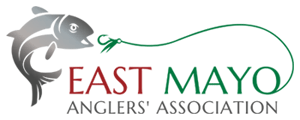By Gary Smyth
Salmon & Sea Trout
A few years back during the summer run of grilse there were a lot of anglers referencing the small grilse that were being caught, with people then debating whether all these small salmon were salmon and not sea trout. As a result I’ve sourced a document referencing the differences listed below.
The information contained in this article has been obtained from The Atlantic Salmon Trust which aims to be the definitive resource for information about salmon and sea trout, their remarkable lives and the threats that today are jeopardising their very survival.
Salmon Parr
Salmon parr (1) can normally be distinguished from young brown/sea trout (11) by the more streamlined shape, deeply forked tail, longer pectoral fin, lack of orange on adipose fin, smaller mouth, sharper snout, only 1-4 spots on gill cover (often one large spot), well defined parr marks.
Salmon Smolts
When the salmon parr begin to migrate to the sea, usually in March, April and May, they gradually become more elongated and the fins darken. A layer of guanine crystals is laid down in the skin rendering the body more silvery in colour and obscuring the spots and finger-marks, except on the gill-covers. They then become Smolts.
How do you tell the difference between Salmon and Sea Trout?
Salmon (I) can be distinguished from large sea trout (II) by a more streamlined shape, concave tail, slimmer tail wrist, upper jaw reaching no further than rear of the eye, few if any black spots below lateral line, 10-15 (usually 11-13) scales counted obliquely forward from adipose fin to lateral line – trout have 13-16.
The Atlantic Salmon Trust undertake research projects and share their information with anglers about their findings regarding the migration of salmonids in rivers, coastal and marine environments. For more information please visit https://atlanticsalmontrust.org/





